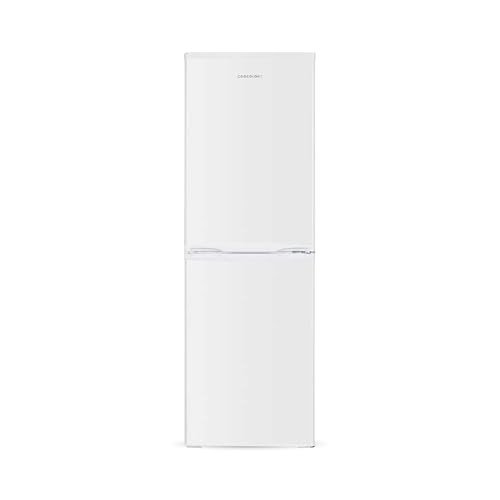The Best Fridges And Freezers Tricks For Changing Your Life
페이지 정보

본문
Understanding Fridges and Freezers: The Essential Kitchen Appliances
Refrigerators and freezers are 2 of the most vital devices in modern-day cooking areas. These appliances serve an important role in food conservation and waste reduction by making sure that disposable items remain fresh and safe for intake. This article explores the different kinds of fridges and freezers, their performances, and essential considerations for selection and upkeep.
Types of Refrigerators
The market offers a variety of refrigerator types, each developed to fulfill various customer needs. Below is a list of the most common types of fridges:
Top-Freezer Refrigerators

- Most typical type.
- Freezer compartment is situated above the refrigerator section.
- Typically more economical and energy-efficient.
Bottom-Freezer Refrigerators
- Freezer is situated at the bottom.
- Permits easier access to fresh items at eye level.
- Often includes pull-out drawers for better organization.
Side-by-Side Refrigerators
- Refrigerator and freezer sections are nearby.
- Suitable for narrow cooking areas and permits easy access to both compartments.
- Often features water and ice dispensers.
French Door Refrigerators
- Combines a bottom freezer with double doors at the top.
- Offers ample storage and trendy styles.
- Often consists of features like temperature-controlled drawers.
Compact Refrigerators
- Smaller sized size ideal for minimal spaces.
- Typically utilized in dormitory, studio apartments, or as secondary best fridges (supplemental resources).
Table 1: Comparison of Refrigerator Types
| Type | Benefits | Disadvantages | Normal Size |
|---|---|---|---|
| Top-Freezer | Cost effective, energy-efficient | Less convenient access to the freezer | 14-30 cu. ft. |
| Bottom-Freezer | Simpler access to fresh food | Freezer can be more difficult to arrange | 19-30 cu. ft. |
| Side-by-Side | Easy gain access to, water/ice dispenser | Narrow vs. storage area | 22-30 cu. ft. |
| French Door | Trendy, large, arranged | More pricey | 20-30+ cu. ft. |
| Compact | Space-saving, portable | Restricted storage | 1.7-5.5 cu. ft. |
Types of Freezers
Freezers are an equally essential appliance for food conservation. They come in various styles developed to fit different household needs. Consider the list below types:
Upright Freezers
- Operate like a basic refrigerator with vertical storage.
- Easier to organize with shelves and compartments.
Chest Freezers
- Big, horizontal style normally using more storage space.
- Maintains temperature levels much better during power blackouts.
- More energy-efficient than upright designs.
Portable Freezers
- Compact units ideal for outdoor activities or little areas.
- Often utilized for camping trips or as momentary storage.
Table 2: Comparison of Freezer Types
| Type | Advantages | Downsides | Common Size |
|---|---|---|---|
| Upright Freezer | Much easier to organize | Less energy-efficient, more floor area | 5-20 cu. ft. |
| Chest Freezer | Holds more products, energy-efficient | Harder to organize | 5-25 cu. ft. |
| Portable Freezer | Compact and versatile | Minimal storage capability | 1-10 cu. ft. |
Key Features to Consider
When picking a fridge or freezer, consumers ought to keep in mind a number of features that can enhance performance:
- Energy Efficiency: Look for designs with the ENERGY STAR certification to save on electricity expenses.
- Storage Capacity: Evaluate storage requirements based on household size and consuming habits.
- Temperature level Control: Some appliances use digital controls for exact temperature settings.
- Adjustable Shelving: Customizable shelving permits ideal company.
- Water and Ice Dispenser: Offers benefit but can take up valuable area inside.
- Noise Level: Sound scores can influence comfort, particularly in open-concept homes.
Pros and Cons of Having a Fridge and Freezer
While fridges and freezers are essential innovations, they likewise have specific benefits and drawbacks:
| Pros | Cons |
|---|---|
| Preserve food life expectancy and minimize waste | Need routine upkeep |
| Enable bulk purchasing and meal prepping | Can be costly to buy and run |
| Offer benefit and quick access to food | Inhabit substantial cooking area space |
Maintenance Tips
To guarantee longevity and optimal performance of fridges and freezers, consider the following upkeep tips:
- Regular Cleaning: Clean the interior and outside occasionally to avoid buildup of dirt and bacteria.
- Inspect Seals: Inspect door seals routinely for leakages to keep effectiveness.
- Temperature level Settings: Keep the fridge at 34-38 ° F and the freezer at 0 ° F for optimum food preservation.
- Thaw as Needed: Chest freezers should be thawed routinely to maintain effectiveness.
- Clear Air Vents: Ensure that airflow isn't blocked to enhance energy effectiveness.
Frequently asked questions About Fridges and Freezers
Q1: How long can food be kept in a freezer?A: Most foods can be kept in a freezer for numerous months. Meats and poultry typically last 4-12 months, while vegetables can last approximately 8-12 months.
Q2: How frequently must I clean my fridge and freezer?A: It is suggested to clean your fridge and freezer every 3 to 6 months, or as required when spills take place. Q3: Can I put hot food straight in the fridge?A: It is advised to cool hot food to space temperature before positioning it in the fridge to avoid
raising the temperature inside the appliance. Q4: Why is my fridge running constantly?A: This could be due to a malfunctioning thermostat, blocked coils, or door seals that aren't working effectively. Fridges and freezers are invaluable
possessions to modern-day households, offering important services for food storage and preservation.
Comprehending the different types, features, and upkeep requirements can assist customers select the ideal appliances for their needs and optimize their performance. Accepting energy-efficient models not only supports sustainable practices but also contributes to substantial savings on energy bills, making informed options more important than ever.
- 이전글Five Killer Quora Answers To Auto Locksmith Car 25.09.09
- 다음글[칼리가입.com / 코드 GOGO] ????칼리카지노 먹튀이력X 칼리사이트 먹튀이력X???? 25.09.09
댓글목록
등록된 댓글이 없습니다.